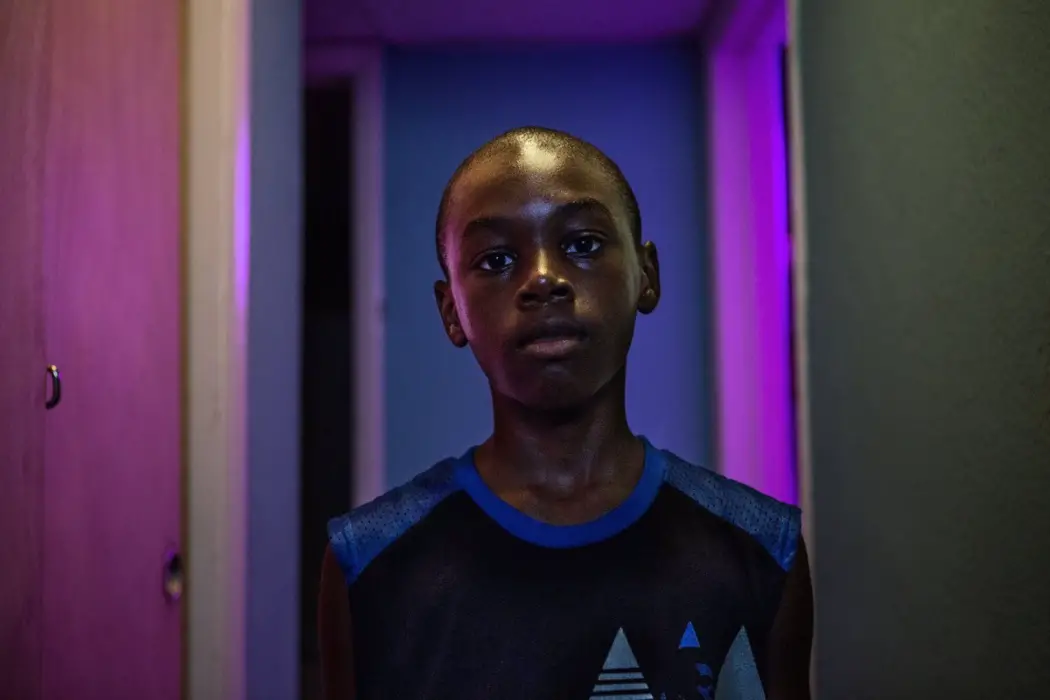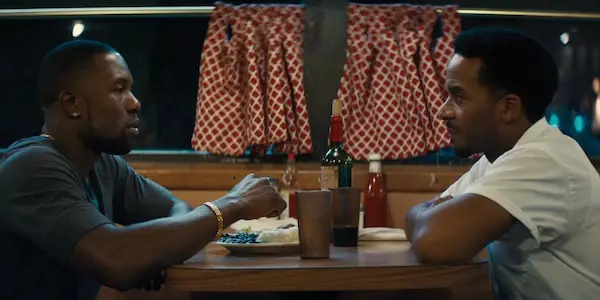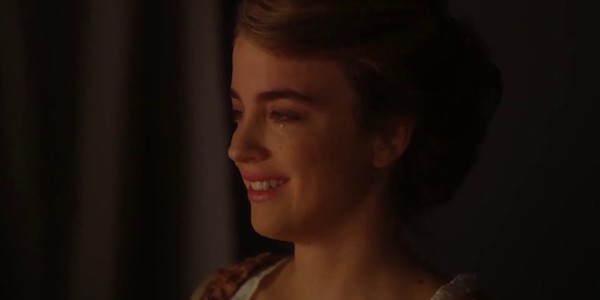A Quiet Joy: Resolution Outside Of Happy Endings

Frances is a graduate of film and digital media from…
Most films end. That is to say, most films follow a narrative in which a goal is either accomplished or not accomplished. This dictates the ending of the story, whether happy, sad, or bittersweet.
Typically, the audience takeaway from a film will correspond with the success or failure of its protagonist. Films with a happy ending — most films — make an audience happy (as is the frequent goal of entertainment). Bittersweet or sad endings play on emotions correspondingly, whether the protagonist has failed, lost something valuable, or died.
And yet, there is an odd type of film which, despite ending sadly — or hardly ending at all — imparts a lasting and powerful joy. It seems to convey a sweeping self-awareness, an acceptance of identity, from a memory or imagination of a better past. It holds close the celebration of temporary pleasures within a larger, often painful, life.
The two films I will discuss are Moonlight (2016, dir. Barry Jenkins) and Portrait of a Lady on Fire (2019, dir. Céline Sciamma). I find that these films rely on recollection or imagination of the past to offer a sense of happiness despite unpleasant circumstances. They present unhappiness without necessary suffering; their protagonists find joy within small moments. This leads to a profound philosophy of acceptance applicable even to everyday life.
Films About People
I felt the same way at the end of Moonlight as I did after Portrait of a Lady on Fire. Both films are quiet, musical, contemplative pieces which rely on introspection and tension, often unspoken, between characters. They are based in characterization rather than traditional narrative, and both their characters discover their identities, explore their futures, and fall in love.
Moonlight follows, more than a story, a man. We are centered on Chiron, a boy who grows up onscreen. As a child he has a troubled home and school life, and is severely bullied by his classmates. As an adolescent, he develops feelings for his best friend, Kevin. They share a brief intimate moment before being separated by peer pressure and then by several states after Chiron is arrested.
We are pulled quite abruptly into Chiron’s adulthood. He has settled into a home by himself, though not quite satisfied, and not quite fulfilled by his work. Kevin calls him one night, for no apparent reason, and soon after, Chiron drives for hours to stop by the diner where Kevin works.

Late into the night, they reconnect. Chiron is unclear in his identity even now, and he struggles to make genuine conversation with Kevin, who seems to have found happiness through his work and relationships. Eventually, Chiron has a moment of vulnerability, and the film ends.
There is no conventional resolution to be seen here. No miraculous breakthrough is discovered, no new life started, no dramatic romance began. Simply a moment of emotional openness in the life of an unfulfilled man.
Portrait of a Lady on Fire, rather than a person, is intensely focused on relationship dynamics between characters. We are introduced to a small household where an artist, Marianne, has been sent to secretly paint an unwilling fiancée. Héloïse, who has been engaged to a stranger in Milan, refuses to be painted, so Marianne is to pretend to be a walking companion for her.
Despite their circumstances, the women grow closer and eventually intimate. They are together for only five days. Héloïse knows this, and in fact, accepts it when she discovers and agrees to sit for the painting that will be sent to her fiancé. She chooses to submit to her now inevitable future in order to keep Marianne, the very painter ensuring this future, close for a moment more.
The women know they will be parted, and yet they rejoice in every second they spend together. As promised, Marianne is soon sent away, and Héloïse is married. There are no last-minute, sweeping-gesture surprises. In this sense, Portrait is both perfectly predictable, and in terms of romantic filmmaking, completely unpredictable.
Fleeting Joy
There is a moment in each of these films — the final moment, in fact, the very last shot in each film — which, despite the sadness and complexity of its preceding hours, imparts pure and particular joy.
Toward the end of Moonlight, Chiron tells Kevin that no man has ever touched him since Kevin did ten years ago: a moment of truth and vulnerability more for himself than Kevin. The film cuts, but there is one last shot. A young Chiron stands at the edge of the ocean, bathed in blue moonlight. He turns his head to look directly into the camera.

This passage through time shows us a parallel universe — what might have been if Chiron had been loved, perhaps, a bit more or a bit differently as a child. Adult Chiron is, in voicing his repressed identity, accepting it. In this, we find a lost, but happier past, reclaimed by himself decades later.
One glance by this boy into the camera somehow communicates a silent, joyful liberation. This quiet child still lives in Chiron, and he is loved. He is a symbol of pure, unburdened identity.
In Portrait of a Lady on Fire, we have somewhat of an epilogue, set long after Marianne and Héloïse are parted. Marianne describes the last time she saw Héloïse: years later, at a concert of Vivaldi’s “Summer,” the same song that Marianne played for her when they met. The last shot of the film is a long, long take zooming in on Héloïse — who does not see Marianne — rapturously listening. Tears running down her face, she seems to experience the breadth of human emotion in seconds.
Héloïse has not seen Marianne since they parted, yet at this moment she returns to her. She feels sadness, regret, certainly, but she also remembers Marianne and their intense, fleeting happiness. She has accepted her new life, but she has also accepted this past into herself as a secret reprieve. And while Héloïse holds the memory of them together, Marianne holds as well this memory of Héloïse remembering her.
Joy and Acceptance
There is a sense of abandonment at the end of each of these films. As if purposely blocking an audience’s sense of resolution, Marianne narrates from the same place she started — as a painter living alone — and tells us definitively that she never saw Héloïse again. Chiron leans into his friend, with more hope for a future than Marianne, but without any sense of certain change.
And still, in each last shot, there is an acceptance of momentary joy that speaks profoundly to the beauty of everyday life. Young Chiron embodies this momentariness in his innocence and pleasure in being recognized (or, perhaps, manifested). He is Chiron’s identity in its purest form before it was hidden away.
Héloïse feels this momentariness too, through the melody that accompanied her happy days. Marianne, watching her stormy recollection, relives this perhaps more vividly with acceptance and finality told through her narration.

In a way, for each character, their memories of happiness live on. They have accepted their past, long gone, as past, but refuse to stop feeling the joy of those precious moments. And in this last reminder of their steadfast remaining — continuing — joy, we are introduced to something much bigger than not only the characters but than ourselves. We are reminded of life’s impermanence, and its pain, and its pleasure nonetheless.
Leaving And Living In Joy
There is no ultimate success for Chiron or for Marianne and Héloïse, but neither is there an ultimate tragedy. Chiron is left in a moment, accepting of his past and possibly hopeful for his future. Marianne and Héloïse continue to live, as they must, moving on at least a little while keeping pockets of remembrance for the bliss they briefly knew.
Though it may or may not have been the point of either of these films, a sweet lesson rests in their final moments. Yes, all joys are momentary, they tell us, withholding the misleading reprieve of a happy ending. As the poet Rilke says, “no feeling is final.”
And so, realistically, they also refuse to really end. Instead, they show us life closer to how it is: sometimes painful, always fleeting, and often joyful. There is no need for permanent bliss because such a thing is impossible. Rather, life goes on, and we would do best to savor happiness as it comes, the better for its memory.
Did these films make you sad or satisfied? Do any other movies make you feel like this? Let us know in the comments!
Does content like this matter to you?
Become a Member and support film journalism. Unlock access to all of Film Inquiry`s great articles. Join a community of like-minded readers who are passionate about cinema - get access to our private members Network, give back to independent filmmakers, and more.
Frances is a graduate of film and digital media from California. She enjoys watching and expounding theories on cinema, especially when experimental or directed by women. In her spare time she enjoys reading short stories and writing queer fantasy.













